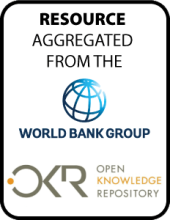Land Library Search
Through our robust search engine, you can search for any item of the over 73,000 highly curated resources in the Land Library.
If you would like to find an overview of what is possible, feel free to peruse the Search Guide.
/ library resources
Showing items 1 through 9 of 689.This note is part of an Action Notes series and provides guidance for governments on how to create an investment climate that is conducive to attracting high-quality, responsible investment in agriculture.
Despite the spread of automation and new supply chain management paradigms, logistics remains dependent on a rather specific set of skills and competencies, whether for managerial, administrative, or blue-collar jobs, such as trucking or warehousing.
In the Mekong region, conflicts between local communities and large scale land concessions are widespread. They are often difficult to solve.
Secure land tenure in rural landscapes is widely recognized as an essential foundation for achieving a range of economic development goals. However, forest areas in low and middle-income countries face particular challenges in strengthening the security of land and resource tenure.
This report was prepared as part of the
World Bank engagement in the Philippines to support Islamic
Finance and Financial Inclusion. It provides an overview on
the context for the development of Islamic finance in the
Mali is a vast, land-locked country in
West Africa with a population of approximately 14.9 million,
and a GDP per capita of USD480. The economy is largely
rural, with over two-thirds of the population living off
This report looks at the growth poles
policy in Romania to determine ways to increase its
effectiveness and efficiency for the next programming cycle
(2014-2020). The growth poles policy in Romania has been
Integrated Development Plans (IDPs) have
been introduced in Romania as a prerequisite for accessing
EU funds under the Regional Operational Program (ROP). The
IDPs designed for growth poles represent a specific category
As India continues to urbanize and move
towards a less agricultural- and more industry-based
economy, land demands will continue to grow. Its urban
population is expected to increase by more than 200 million




